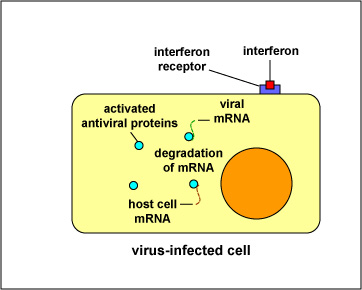
Produced by immune-activated cells or virus-infected cells in response to viral infection, interferons exert their antiviral activity by binding to uninfected neighboring cells and inducing them to produce enzymes that degrade viral mRNA as well as block translation in eukaryotic cells. This not only prevents translation of viral mRNA into viral protein it also eventually kills the infected host cell, the factory producing the viruses. Interferons also enhance body defenses against viruses by enhancing the activities of CTLs, macrophages, NK cells, and antibody-producing cells. The entire virus is placed in an endocytic vesicle.
Last updated: August, 2019
Please send comments and inquiries to Dr.
Gary Kaiser